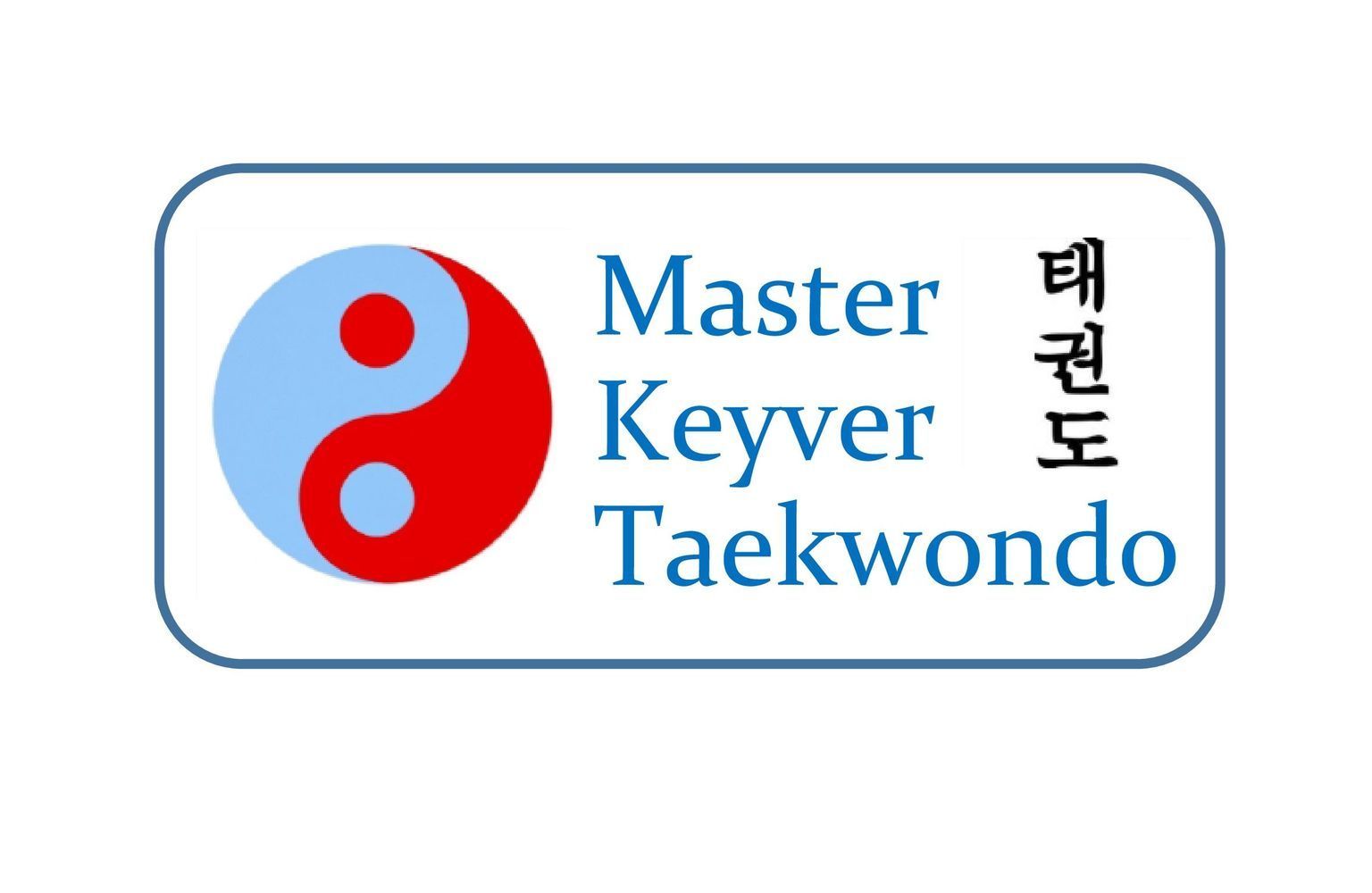An introduction to Taekwondo kicking techniques
Kicking is the most powerful aspect of all Taekwondo techniques. Various parts of the foot are used as the striking tool depending on the type of kick executed.
Ball of the foot – This is the area directly underneath the toes. When this area is engaged the toes must be pulled back.
Footsword - The outer edge of the foot and is used by turning the foot down so the sole lies horizontal to the leg.
Heel – This is a hard surface and used in penetrating kicks.
Instep – This is at the top of the foot and is used when the toes are pointed forward.
Sole of the foot – This part of the under foot provides a bigger surface area and is used to force an opponent backwards.
Principles for correct kicking techniques:
a) Speed
b) Power
c) Balance
d) Accuracy
To be able to kick forcefully with speed, proper balance is required. Maintain a strong balance and never raise the heel of the stationary leg during the kick. Adjust distance correctly to ensure the kick is most effective and powerful at the point of impact. Always rotate the hips into the kicks to maximize the power. Using the hips correctly helps extend the reach and height of the kick.
Pyojeok Chagi – Target Kick
This kick originates from outside the body.
- the rear leg is raised upwards and inwards in an arc.
- the leg should be kept straight.
- at the highest point of the arc sweep the leg inside across the target.
- the point of impact should be at the apex of the arc.
- contact is made with the reverse footsword.
- the target area is the head.
This kick can be used in the opposite direction, with the leg swinging in an arc from inside to outside. Contact is made with the footsword.
Naeryo Chagi – Downward Kick
This kick requires greater flexibility and difficulty can arise in maintaining balance.
- the back kicking leg is swept across and in front of the body.
- the leg is then raised directly upwards above the target.
- keep the kicking leg as straight as possible.
- at the apex the straightened leg is brought down onto the target.
- contact is made with the back heel or the sole of the foot
- the target area is the head or shoulders.
Mireo Chagi – Push Kick
This is a linear kick to impact a target straight ahead.
- the knee of the kicking leg is raised close to the chest.
- the foot is pulled to a vertical position by pulling back the toes.
- push the leg straight out driving the sole of the foot through the target.
- contact is made with the heel or the sole of the foot.
- the target is the chest area above the waist.
Ap Chagi – Front Kick
A basic Taekwondo kick.
- Raise the kicking leg up, folding the knee up to chest height and quickly push the foot forward, fully stretching the leg.
- The path of the kicking leg should be on a straight line towards the target.
- The target must be hit by the ball of the foot, instep straight with the toes pulled backward.
- The supporting foot must naturally pivot using the ball of the foot during the kick.
- To recover, the kicking foot is pulled back to the folding knee position with the knee still at the chest level then smoothly bring the foot down with balance.
Dollyo Chagi – Turning Kick
Sometimes referred as a ‘roundhouse’ and is one of the most versatile Taekwondo kicks.
- Putting the weight on the pivoting foot, raise the kicking leg by folding the knee and immediately turning the body and lifting the hip upward at an angle towards the face target.
- As the knee stretches, make the kicking foot circle horizontally towards the face target hitting with the instep or ball of the foot.
- The supporting leg must be kept straight with the supporting foot pivoting properly during the kick.
- The toes of the supporting foot faces backward at the final extension of the kicking leg.
- To recover, the kicking foot is pulled back to the folding knee position with the knee still at the chest level then smoothly bring the foot down with balance.
Momdollyo Chagi – Reverse Turning Kick
The execution of this kick closely resembles the 180 degree hooking kick.
- pivot 180 degrees backwards on the front foot.
- simultaneously raise the back leg.
- the back leg swings from behind towards the target.
- impact the target as the leg nears full extension.
- contact is made with the back of the heel.
- the target area is the head.
Momdollyo Nakka Chagi – Reverse Hooking Kick
- pivot 180 degrees backwards on the front foot.
- simultaneously raise and bend the knee of your back leg.
- the back leg swings from behind towards the target.
- the approaching kicking leg is bent sharply inwards to strike the target.
- contact is made with the back heel.
- the target area is the head.
Huryeo Chagi – Thrashing Kick
The execution of this kick closely resembles the hooking kick.
- the kicking leg is lifted with the hip turned towards the target.
- the leg is thrust forward and upwards
- position the outstretched leg so it extends to the far side of the target.
- the outstretched leg is then bent rapidly inwards in a whipping motion.
- contact is made with the back heel or the sole of the foot.
- the target area is the head.
Yop Chagi – Side Kick
One of the most powerful Taekwondo kicks.
- Raise the kicking leg up, folding the knee, kick forward by stretching the leg and simultaneously turning the hip forward.
- Turn the body in the opposite direction of the target and hit the target using the blade or knife-foot.
- The supporting leg must be kept straight with the supporting foot pivoting properly during the kick.
- The toes of the supporting foot faces backward at the final extension of the kicking leg.
- To recover, the kicking leg is drawn back to its original folded position and brought down smoothly.
- During the kick, the upper body should be kept as high as possible ideally forming the letter 'Y' shape.
Dwit Chagi – Back Kick
This is a particularly strong Taekwondo kick.
- pivot on the front foot.
- simultaneously reverse the hips to view the target over the shoulder.
- view over the same side shoulder as the kicking leg.
- raise and bend the knee of the kicking leg.
- thrust the leg out backwards to deliver the kick.
- contact is made with the heel and the toes should point downwards.
- the target area is the midsection.
Bituro Chagi – Twisting Outer Kick
One of the most difficult Taekwondo kicks to execute.
- raise and cock the knee the same as a front kick.
- simultaneously raise the foot and lower leg inward.
- twist the hips thrusting the foot in a circular direction towards the target.
- this is a snapping motion from inside to outside.
- contact is made with the ball of the foot or the instep.
- the target area is the midsection or the head.
Twio Chagi – Jumping Kicks
Jumping can be combined with most kicks to change the angle of attack.
Execute the kick at the highest point of the jump.
Mureup Chigi – Knee Strike
Knee techniques are taught in Taekwondo but cannot be used in competition.
Pointers for reverse kicking and back kicks:
On the turn keep the upper body erect. It is crucial you realign your eyes on the target after the turn. Coordinate all the elements of the body motion into one smooth movement.
Pivoting Techniques:
It is important to pivot the foot that remains on the floor so the heel of the foot rotates towards the target.
In training:
Slow kicking practice is vital to mastering good kicking techniques. All Taekwondo kicks should be practised with both legs.
To kick high you must be flexible and able to stretch. Work on your chamber and knee lift to improve your technique.
If you stay balanced during the kick you can recover more quickly. Important after kicking to re-chamber the leg. This allows you to
complete combination kicks. Equally important is to return to a fighting stance quickly. This allows you to be ready for the next kick.
Always Ki-hap! The ki-hap focuses the power of the kick onto the target.
Only after mastering the basics should you move on to the more advanced kicks.
Note: The above gives only brief descriptions. To master the kicks fully, learn them in class.




